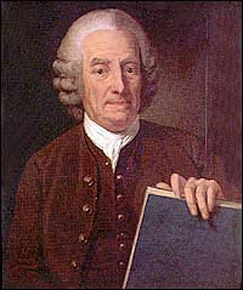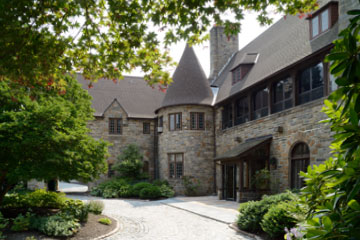If you want to deepen your relationship with the Lord, you are invited to find connection, clarity, and usefulness in life through the New Church lens. What we teach is immediately practical and deeply spiritual: this is a religion to be lived, not just believed, and you will be equipped to explore the Bible in ways that can have immediate application to your life.
Traditions, life events, and moments of personal struggle highlight the power of spiritual community. Goodwill towards each other demonstrates the Lord's power to bond us together as people, and learning about the Lord's Providence and constant presence can give us a sense of hope through all experiences. Waiting for you is an uncommon opportunity to love others, connect with the Lord, and experience peace and clarity.
What We Do
The New Church is a Christian community of people who come together in devotion to the Lord God Jesus Christ and His Word. Our aim is to connect God and your spiritual life to your daily life & decisions. We exhibit a visible commitment to your spiritual growth by helping you explore the Bible for its internal meaning, which has direct applications for both our lives here on earth as well as our future heavenly lives, and by connecting you with others on their own journey.
In conjunction with the Old and New Testaments, we read and believe in the theological writings of Emanuel Swedenborg, which offer a new sense of clarity about the meaning of the Bible. We call this the Three-fold Word.
Grow spiritually and learn with us, and watch to find out: What is the New Church?
The Early New Church
The story of the New Church begins with groups of readers scattered across Sweden, France, Germany, and England, who were inspired by Emanuel Swedenborg’s Theological Writings during the later part of the scientist-philosopher’s life (1688-1772.) While the New Church is often referred to as a “Swedenborgian” denomination, Swedenborg never founded any church or group, but merely wrote with the hope that the insights would influence the Christian churches of his time, which he saw drifting from the true Christianity of the Bible.
It was not until 1783, just ten years after Swedenborg's death, that the first organization was formed in London with the purpose of reading, discussing, and eventually translating Swedenborg's Latin Writings into English. Initially the Writings were taught alongside conventional Christianity, but in 1787, it became clear that the new doctrine could not be preached in conjunction with the old. The group broke away to pursue independent worship.
Threats of persecution slowed the spread of the Writings in Sweden but did not dampen the enthusiasm of some early Swedish adopters. One such individual, Carl B. Wadstrom, was so moved by Swedenborg's claims of the distinguished spiritual character of African peoples that he became one of the fathers of the movement to abolish the slave trade.
Only in England, an early center of religious freedom, was there a strong Swedenborgian movement guided by a priesthood. Many people read the doctrines and were deeply influenced by them (including individuals such as William Blake, Robert Browning and Thomas Carlyle), though not all became active church members.
Crossing the Atlantic
The doctrines were first publicly taught in America in 1784 in a lecture by James Glen. Soon after, a group dedicated to the Writings began meeting in Baltimore and later moved to Philadelphia, establishing the General Convention, which remains active today.
The church in America grew along the Atlantic coast, with small groups of readers gathering to read and discuss the Writings. Occasionally these enclaves of readers would welcome New Church missionaries, such as one young man named Jonathan Chapman, known today as "Johnny Appleseed." From the cider mills of Pennsylvania, Jonathan Chapman traveled barefoot among the pioneer settlements of Ohio, planting orchards in the river valleys and spreading the new doctrines wherever he went. He did this by he freely disseminating—along with his apple seeds— torn out pages from the Writings as "good news fresh from heaven.”
Creating Institutions
From early in their history, there have been differing views about Swedenborg's Theological Writings. Some have regarded them as helpful commentaries on the Scriptures and as a useful, but not infallible, guide to life. Others saw them as bearing Divine authority and signifying a New Christianity—a New Church, with a distinctive doctrine which was nothing less than the Second Coming of the Lord.
In 1876, "The Academy of the New Church" was founded under Rev. William Henry Benade's leadership in Philadelphia. The primary effort of the Academy, which began with only a few students, was to provide for the training of a New Church priesthood. Soon, however, it attracted support from many Swedenborgian scholars from America and England. Owing to the zeal of its leaders and generous endowments from church members, the Academy grew.
As the Academy movement evolved, its views on baptism and leadership began to stand in sharp contrast to those of the General Convention. The consequence was a severance of connections with the Convention and in 1897, ministers from the Academy of the New formally established "The General Church of the New Jerusalem," more often referring to their organization referred to as "the New Church" or "the General Church.”
The organization meeting took place in Alnwick Grove in Pennsylvania, an area 15 miles north of Philadelphia. This locality, now the Borough of Bryn Athyn, became the site for the Academy as well as a growing New Church community.
The New Church Since 1900
The New Church as a formal denomination took root in Bryn Athyn, where a devoted church community was forming and endowments from the Pitcairn family funded school buildings for the Academy of the New Church. During the war years of 1914-1918, John Pitcairn built the now famous Bryn Athyn Cathedral, an architectural and artistic masterpiece which attracts thousands of visitors every year.
After the Second World War, enrollment in the Academy increased substantially, and as the General Church grew and spread, strong church communities developed in other countries, notably England, Sweden, Holland, France, Canada, and Australia. In 1919, Bishop Pendleton ordained a group of ministers in South Africa, which gradually led to an expanded presence across the continent. In the latter part of the century, the ministry almost doubled in size and an expansion of evangelization work was initiated to spread awareness of the new teachings and further grow the church.
The growth of the movement now continues into a new century, which has brought a New Church presence in many more countries around the world, such as Brazil, Japan, Korea, China, the Philippines, Ghana, Kenya, the Ivory Coast, Russia, and the Czech Republic. Efforts have been underway to continue translating Swedenborg's Writings into such languages as Spanish, French, Russian, Chinese, Korean, and Zulu.
Today there are many New Church educational institutions, including a handful of elementary schools across the world, the Academy Secondary Schools for boys and girls, Bryn Athyn College, and the Academy of the New Church Theological School, giving students from around the world the opportunity to learn in the light of New Church teachings.
New centers for theological training are being established around the world, raising hopes of establishing interest in New Church teachings far and wide. As Helen Keller said, in her tribute to Swedenborg and the New Church, "True Christianity will yet inundate the world like the ocean at floodtide.” (Light in My Darkness, 1994, p.123)
Read about...
The New Church has congregations in many countries around the world.
and many states in the U.S.
Find a churchGot questions?
We'll be glad to answer your questions, or to discuss your problems. Tell us about it!




